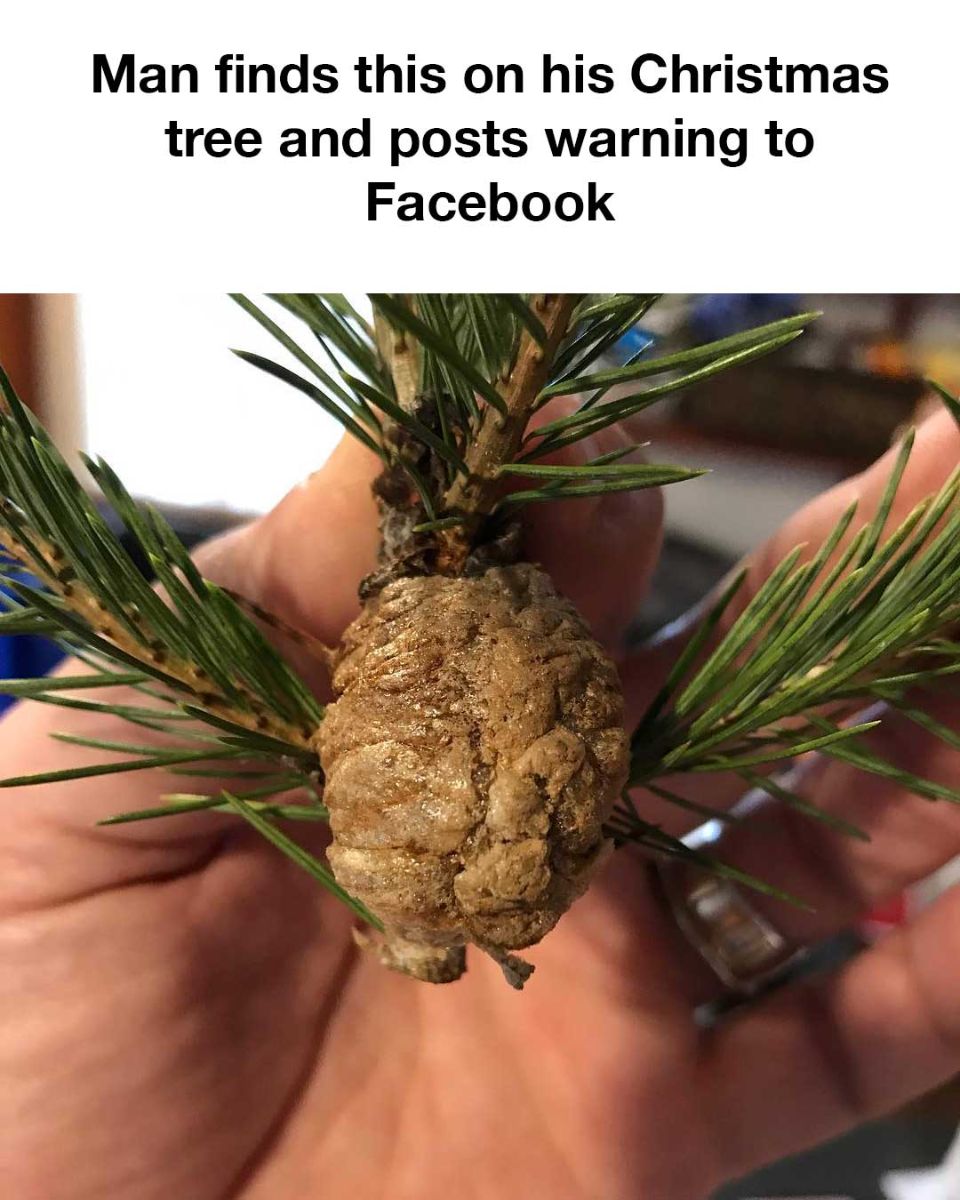As the holiday season approaches, families around the world begin the cherished tradition of decorating their homes with festive ornaments and, of course, the iconic Christmas tree. However, one man’s experience with his Christmas tree took an unexpected turn when he discovered something unusual nestled among the branches. This discovery led him to post a warning online, drawing attention to a hidden aspect of holiday decorations that many might overlook: praying mantis eggs.
The Unexpected Encounter: Praying Mantis Eggs
While adjusting the ornaments on his freshly acquired Christmas tree, the man noticed a peculiar brownish mass attached to one of the branches. Upon closer inspection, he realized it was an egg case, or ootheca, belonging to a praying mantis. This unexpected encounter prompted him to share his findings on social media, warning others to inspect their trees carefully to avoid a potential hatching event indoors.
He writes to Facebook, “If you happen to see a walnut sized/shaped egg mass, on your Christmas tree, don’t fret, clip the branch and put it in your garden. These are 100-200 preying mantis eggs! We had two egg masses on our tree this year. Don’t bring them inside they will hatch and starve!”
Daniel Reed via Facebook
Understanding Praying Mantis Egg Cases
Praying mantis egg cases, known as oothecae, are protective structures that house the eggs of this fascinating insect. These cases are typically brown, foam-like, and can contain dozens to hundreds of eggs. The ootheca provides a safe environment for the eggs to develop over the winter months, with the young mantises emerging in the spring when temperatures rise.
How Praying Mantis Eggs End Up in Christmas Trees
Christmas trees, often sourced from outdoor tree farms, provide a natural habitat for various wildlife, including praying mantises. During the late summer and fall, female mantises lay their eggs on tree branches. When these trees are harvested and sold as Christmas trees, the egg cases can inadvertently be brought into homes, hidden among the branches.
Potential Risks and Benefits of Having Praying Mantis Eggs Indoors
While the idea of having hundreds of tiny mantises hatching in your living room might be unsettling, praying mantises are generally harmless to humans and pets. In fact, they are beneficial insects, known for their role in controlling pest populations. However, an indoor hatching could lead to a messy situation, as the young mantises will disperse in search of food.
Steps to Safely Handle and Remove Praying Mantis Eggs
Next Page

